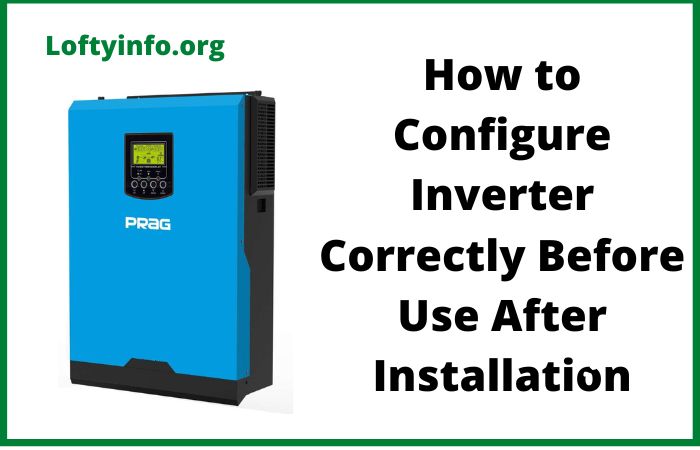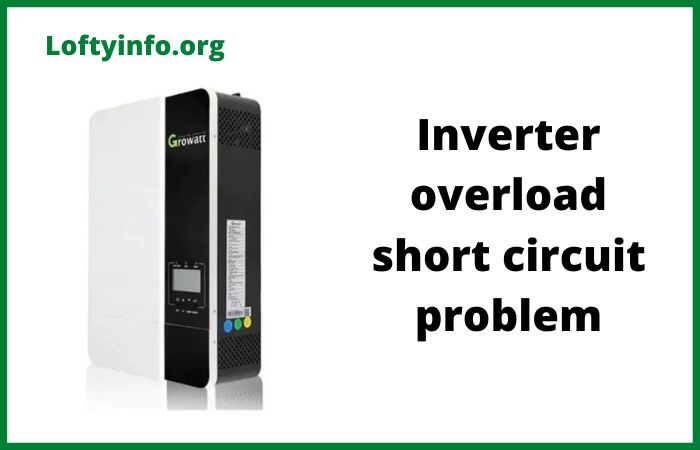Causes of Luminous Inverter Smart Charging Problems
Luminous inverters are equipped with intelligent charging systems designed to optimize battery performance and lifespan.
Users frequently encounter charging-related issues that can significantly impact the inverter’s functionality.
Understanding these problems and their root causes is essential for effective troubleshooting and maintenance.
This comprehensive analysis examines the primary causes of smart charging problems in Luminous inverters.
Causes of Luminous Inverter Smart Charging Problems
1. Battery Degradation and Sulfation
One of the most common causes of smart charging issues stems from battery deterioration over time.
As batteries age, their internal chemistry changes, affecting the charging algorithm’s ability to function correctly.
Battery sulfation occurs when lead sulfate crystals accumulate on the battery plates, particularly during prolonged discharge periods or when batteries are left in a partially charged state.
This crystallization process increases internal resistance and reduces the battery’s ability to accept charge efficiently.
The smart charging system relies on specific voltage and current feedback to determine charging stages but sulfated batteries provide irregular feedback signals.
When sulfation is present, the charging system may misinterpret the battery’s actual state of charge.
The inverter might prematurely switch from bulk charging to float mode, thinking the battery is fully charged when it’s actually only partially charged.
Conversely, it might continue charging beyond the optimal point, leading to overcharging and electrolyte loss.
Impact on Smart Charging
The intelligent charging algorithm becomes confused by the inconsistent electrical characteristics of degraded batteries, resulting in improper charging cycles, reduced backup time, and accelerated battery failure.
2. Temperature Sensor Malfunction
Luminous inverters incorporate temperature compensation features that adjust charging parameters based on ambient temperature.
Malfunctioning temperature sensors can severely disrupt the smart charging process.
The temperature sensor, typically a thermistor or integrated circuit sensor, monitors the ambient temperature around the battery compartment.
This data is crucial because battery charging characteristics vary significantly with temperature.
At higher temperatures, batteries require lower charging voltages to prevent overcharging and gassing, while lower temperatures necessitate higher voltages for complete charging.
When the temperature sensor fails or provides inaccurate readings, the charging system cannot properly compensate for temperature variations.
A sensor reading consistently high temperatures might cause the system to reduce charging voltage unnecessarily, resulting in chronic undercharging.
A sensor indicating low temperatures when it’s actually warm might lead to overcharging, causing excessive heating, electrolyte loss and potential battery damage.
Temperature sensor drift is another common issue where the sensor gradually becomes less accurate over time due to component aging, moisture ingress or physical damage.
This gradual degradation can cause slowly developing charging problems that are difficult to diagnose.
Impact on Smart Charging
Incorrect temperature readings lead to improper voltage compensation, causing either undercharging (reducing battery capacity and backup time) or overcharging (shortening battery life and creating safety hazards).
3. Faulty Charging Circuit Components
The charging circuit consists of various electronic components including transformers, rectifiers, filter capacitors and control circuits.
Failure of any of these components can disrupt the smart charging functionality.
The charging transformer steps down the AC mains voltage to appropriate levels for battery charging.
If the transformer develops turn-to-turn short circuits or core saturation issues, it can produce irregular output voltages that confuse the smart charging controller.
Similarly, aging or damaged transformer insulation can cause voltage fluctuations that make consistent charging impossible.
Rectifier diodes convert AC to DC for battery charging, and when these components fail partially, they can create ripple voltages or voltage drops that affect charging precision.
A failing rectifier might cause the charging voltage to fluctuate, preventing the battery from reaching full charge or causing irregular charging patterns.
Filter capacitors smooth the rectified DC voltage and as they age, their capacitance decreases and equivalent series resistance increases.
This degradation results in increased ripple voltage and poor voltage regulation, which the smart charging system interprets as battery-related issues rather than circuit problems.
The control circuit, including operational amplifiers, comparators and microcontrollers, processes feedback signals and controls charging parameters.
Component drift, thermal stress, or moisture-related corrosion can cause these circuits to malfunction, leading to incorrect charging decisions.
Impact on Smart Charging
Faulty charging circuit components create voltage instabilities and incorrect feedback signals that prevent the smart charging algorithm from operating correctly, potentially damaging batteries and reducing system reliability.
4. Microcontroller Software Corruption
Modern Luminous inverters rely on embedded microcontrollers running firmware that manages the smart charging algorithms.
Software corruption or bugs can cause erratic charging behavior.
The microcontroller firmware contains complex algorithms that analyze battery voltage, current, temperature and other parameters to determine optimal charging strategies.
This software implements multi-stage charging protocols including bulk, absorption and float charging phases, each with specific voltage and current parameters.
Software corruption can occur due to various factors including power surges, electromagnetic interference, memory cell degradation or manufacturing defects.
When corruption affects the charging algorithm sections, the inverter might skip charging stages, apply incorrect voltages or fail to transition between charging modes properly.
Firmware bugs, while less common in established products, can cause specific charging scenarios to malfunction.
For example, the software might have difficulty handling edge cases like deeply discharged batteries, rapid temperature changes or unusual load patterns during charging.
Additionally, calibration data stored in non-volatile memory can become corrupted, causing the microcontroller to use incorrect reference values for voltage and current measurements. This leads to systematic errors in charging decisions, even though the hardware components function correctly.
Impact on Smart Charging
Software-related issues can cause unpredictable charging behavior, including failure to complete charging cycles, inappropriate charging voltages, and inability to adapt to changing battery conditions.
5. Power Quality Issues and Voltage Fluctuations
Poor power quality from the electrical grid, including voltage fluctuations, harmonics, and frequency variations, can significantly impact the smart charging system’s performance.
Smart charging systems are designed to operate within specific input voltage ranges, typically 160V to 270V AC for single-phase systems.
When the mains voltage falls below this range, the charging circuit cannot generate sufficient DC voltage to properly charge the batteries.
The intelligent charging system might interpret this as a battery fault rather than a power quality issue.
Voltage fluctuations cause the charging system to constantly adjust its output, preventing stable charging conditions.
Rapid voltage changes can trigger protective circuits or cause the charging algorithm to reset frequently, interrupting proper charging cycles.
This is particularly problematic during the critical absorption charging phase, where precise voltage control is essential.
Harmonic distortion in the power supply, often caused by nearby electronic equipment or poor electrical installation practices, can interfere with the charging circuit’s operation. Harmonics can cause additional heating in transformer cores, irregular rectifier operation, and electromagnetic interference that affects control circuits.
Frequency variations, while less common, can affect transformer efficiency and the timing of charging algorithms.
Some smart charging systems use mains frequency as a timing reference and significant frequency deviations can cause timing errors in charging sequences.
Impact on Smart Charging
Poor power quality prevents the charging system from maintaining stable, optimal charging conditions, leading to incomplete charging cycles, reduced battery life and unreliable backup power performance.
6. Improper Battery Configuration and Compatibility Issues
Using incompatible batteries or incorrect battery configurations can cause smart charging systems to malfunction, as the charging algorithms are optimized for specific battery types and arrangements.
Luminous inverters are designed to work with specific battery types, typically deep-cycle lead-acid batteries with particular voltage and capacity ratings.
The smart charging algorithms are calibrated based on the electrical characteristics of these recommended batteries, including internal resistance, charging acceptance rates and voltage curves.
When users install batteries with different specifications, the charging system cannot properly interpret the battery’s state of charge.
For example, using automotive batteries instead of deep-cycle batteries can cause problems because automotive batteries have different charging characteristics and are not designed for repeated deep discharge cycles.
Battery capacity mismatches within a battery bank create additional complications.
When batteries of different capacities or ages are connected in series, they charge and discharge at different rates.
The smart charging system, monitoring the total bank voltage, cannot account for individual battery variations, potentially overcharging some batteries while undercharging others.
Incorrect wiring configurations, such as improper series-parallel connections or loose connections, can create voltage imbalances that confuse the charging algorithm.
Poor connections increase resistance, causing voltage drops that the system interprets as battery-related issues.
Temperature differences between batteries in the same bank can also cause charging problems.
If batteries are installed in locations with varying temperatures, they will have different charging requirements, but the single temperature sensor cannot account for these variations.
Impact on Smart Charging
Battery compatibility issues prevent the smart charging system from operating as designed, leading to suboptimal charging performance, reduced battery life and potential safety hazards from improper charging.
Conclusion
Smart charging problems in Luminous inverters typically result from a combination of factors rather than single-point failures.
Successful troubleshooting requires systematic analysis of all potential causes, starting with the most common issues like battery condition and power quality, then progressing to more complex electronic and software-related problems.
Regular maintenance, proper installation practices and using recommended components are essential for preventing many of these issues.
When problems do occur, understanding these six primary causes provides a structured approach to diagnosis and resolution, ensuring optimal inverter performance and battery longevity.
Proper documentation of symptoms, environmental conditions, and system configuration aids in accurate problem identification and prevents recurring issues.
Professional technical support should be sought for complex electronic failures or when multiple symptoms suggest system-wide problems.
low frequency inverters technical specifications explained
Luminous inverter automatic off problem causes and solutions explained
Solax inverter troubleshooting






